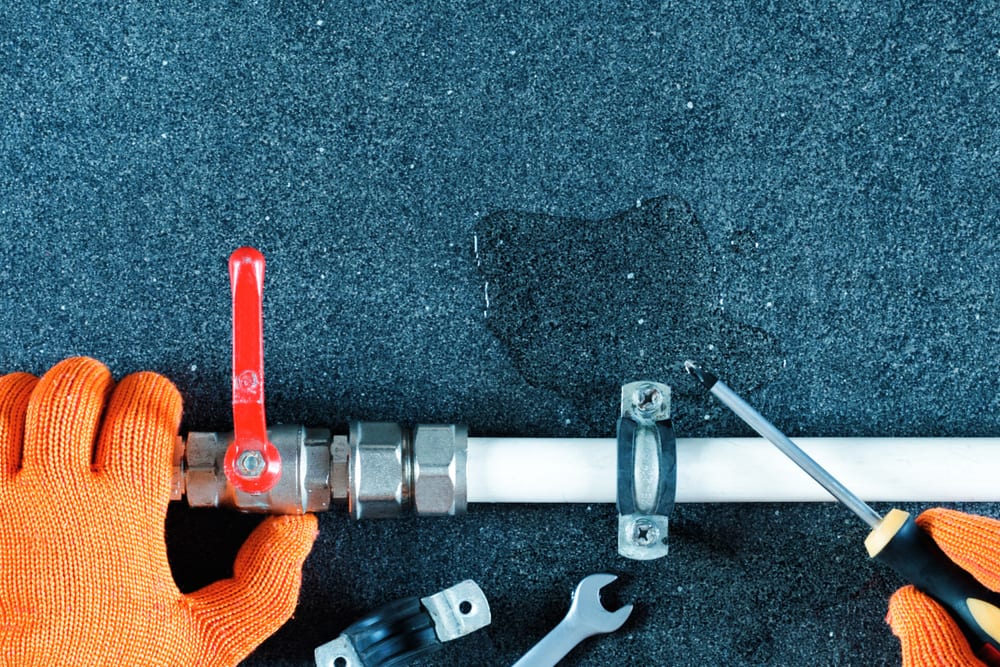Exactly how to Check If Your House Has a Hidden Leakage
Exactly how to Check If Your House Has a Hidden Leakage
Blog Article
Do you find yourself hunting for content about Finding hidden leaks?

Early discovery of leaking water lines can mitigate a possible catastrophe. Some small water leaks might not be noticeable.
1. Take A Look At the Water Meter
Every house has a water meter. Checking it is a proven way that helps you find leaks. For starters, switch off all the water sources. Make sure no person will certainly flush, use the faucet, shower, run the washing device or dish washer. From there, most likely to the meter as well as watch if it will alter. Given that nobody is using it, there should be no activities. That shows a fast-moving leakage if it moves. Furthermore, if you identify no changes, wait an hour or 2 and examine back once more. This indicates you might have a slow-moving leakage that could also be underground.
2. Examine Water Consumption
If you identify unexpected changes, regardless of your consumption being the same, it suggests that you have leakages in your plumbing system. A sudden spike in your costs indicates a fast-moving leak.
On the other hand, a consistent boost every month, despite the same behaviors, reveals you have a sluggish leak that's also gradually escalating. Call a plumber to thoroughly examine your building, specifically if you feel a warm area on your floor with piping beneath.
3. Do a Food Coloring Examination
When it comes to water consumption, 30% comes from commodes. If the color in some way infiltrates your dish during that time without flushing, there's a leakage between the container and bowl.
4. Asses Exterior Lines
Don't forget to inspect your exterior water lines as well. Test faucets by affixing a garden hose pipe. Needs to water seep out of the connection, you have a loosened rubber gasket. Replace this as well as make sure all connections are tight. It will aid get it expertly checked out and also preserved each year if you have actually obtained a sprinkler system. One small leakage can squander lots of water as well as surge your water expense.
5. Inspect and also Examine the Scenario
Property owners should make it a behavior to examine under the sink counters and also even inside closets for any type of bad odor or mold development. These two red flags suggest a leakage so timely focus is required. Doing regular evaluations, even bi-annually, can conserve you from a significant issue.
Examine for stainings as well as compromising as most pipes and appliances have a life expectations. If you believe dripping water lines in your plumbing system, don't wait for it to escalate.
Early discovery of leaking water lines can alleviate a prospective disaster. Some little water leakages may not be noticeable. Inspecting it is a surefire method that assists you uncover leaks. One little leak can lose tons of water and also increase your water bill.
If you suspect dripping water lines in your plumbing system, don't wait for it to rise.
How to Know If Your Home Has a Hidden Leak
Water Meter Reveals Inexplicable Water Usage
If you’d like to test whether or not there’s a leak somewhere in your home, you can do this using your water meter. Here is how to conduct the test:
Don’t use any water in your home for at least 30 minutes; this also means not turning on faucets or water-using appliances.
Go outside, and check your water meter for activity.
If your water meter shows that there was activity, even though no one was using any water, this proves that there is a leak in your home.Visible Mold or Mildew Growth
Leaks behind walls create moist, dark environments that allow mold and mildew to grow and thrive. Eventually, you might see mold growth forming on the wall closest to a hidden leak.
If mold is growing in an area that receives a high amount of moisture, such as a bathroom, it may simply be an indication that better ventilation is needed. However, if you see mold growth on a wall or the ceiling in an area where you would not expect, you probably have a hidden leak.
Musty, Mildew Odor
Sometimes you might not be able to see the mold or mildew that is growing as a result of a leak. However, the smell can give the problem away just as easily. If you catch a whiff of something musty, there’s a good chance that old water is collecting somewhere in your home that you can’t see.
Stained/Warped Walls, Ceilings, or Floors
When your home soaks up water, a variety of red flags can become visible, including ceiling stains, bubbling drywall, warped walls, and sagging floors. While these issues can be caused by excess humidity, they can also be signs that a pipe or plumbing connection has started leaking behind your walls.
Inexplicably High Water Bill
After a while, you get a general sense for what your water bill should be. If you own a pool or sprinkler system, your bill will tend to be higher during summer. However, if you receive a water bill that seems especially high, and you can’t figure out what caused it, then you may have a hidden leak somewhere that’s increasing your bill.
https://www.plumbingjoint.com/blog/2019/july/how-to-know-if-your-home-has-a-hidden-leak/

Hopefully you liked our part about Finding hidden leaks. Thanks a lot for taking the time to read through our blog. Sharing is caring. Helping others is fun. We appreciate reading our article about Detecting hidden plumbing leaks.
Report this page